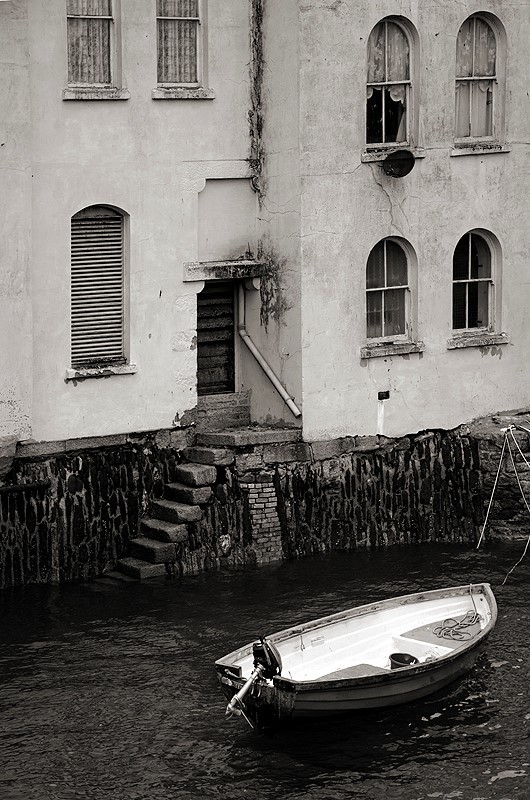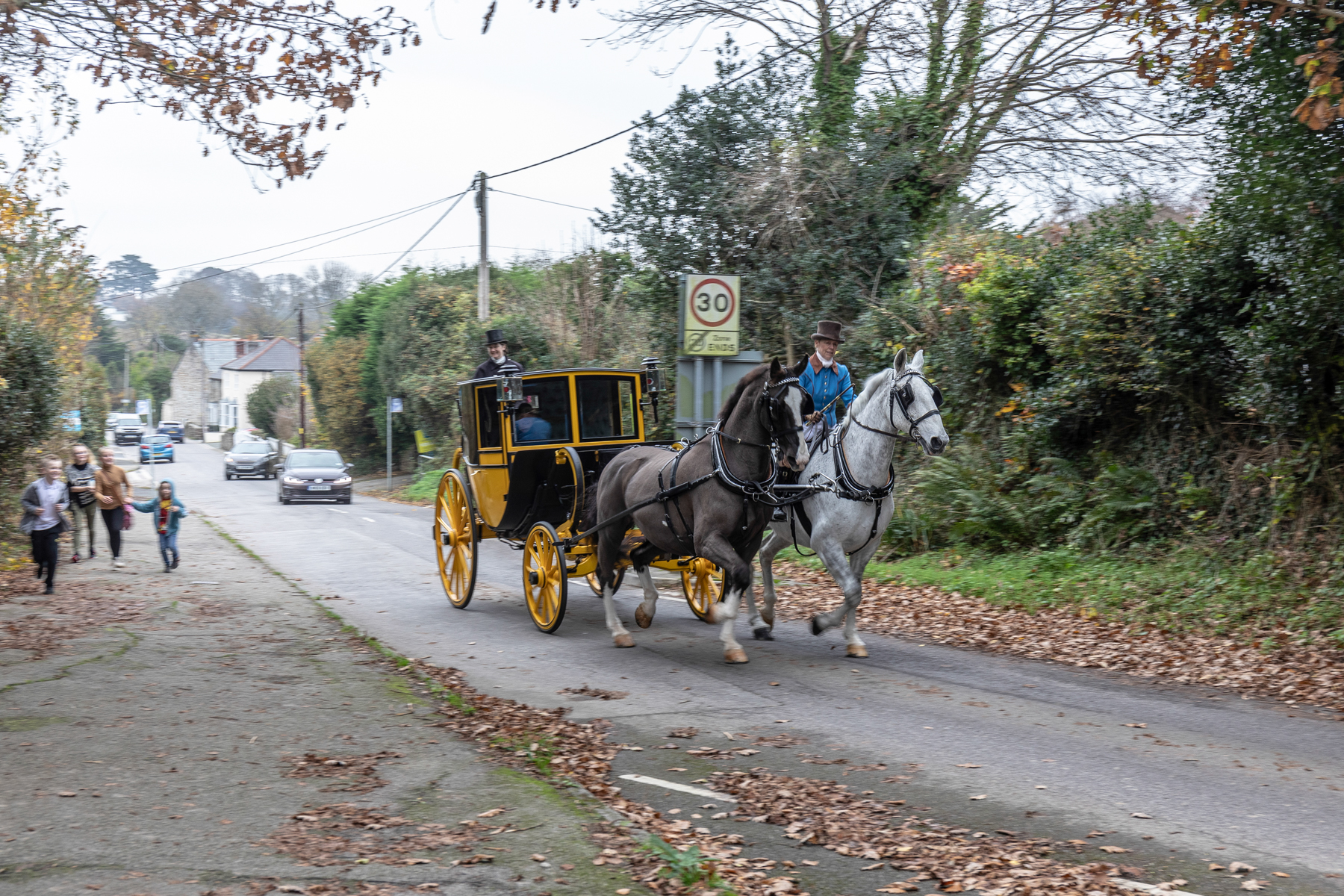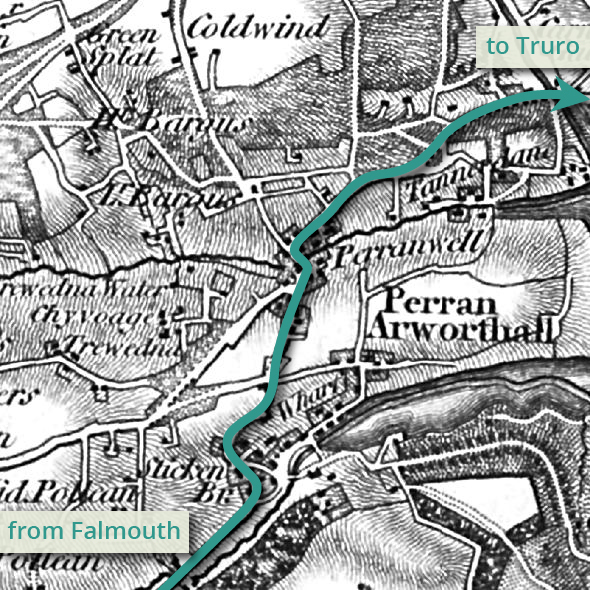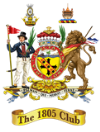Falmouth
Lieutenant Lapenotiere stepped onto Falmouth’s Fish Strand Quay, bearing the news of The Battle of Trafalgar, at about 11a.m. on the 4th of November 1805. From there he headed to a hotel—probably The Royal Hotel—to engage a post-chaise express carriage.
Falmouth Harbour, on the River Fal, is one of the best natural harbours in the world. It is the largest port in Cornwall and remains a busy cargo port. Nearby is Pendennis Castle at Pendennis Point, built by Henry VIII between 1540 and 1542 to protect England against invasion from France or the Holy Roman Empire .
The first plaque for The Trafalgar Way is located on the wall of the Art Gallery in the Moor, and you will also find a plaque celebrating Lapenotiere's arrival at Fish Strand Quay itself. For a peaceful interlude, head into Kimberley Park with its exotic and ornate plants and trees. The modern National Maritime Museum with its collection of marine vessels and special exhibits is well worth a visit.
While in Falmouth, it's worth the extra walk to the stunning beaches at Swanpool, Gyllyngvase, Castle Beach, and Maenporth.
Return to overview
Return to overview

Falmouth: steeped in maritime culture and history
There's always something to catch the eye. Image © Ian Gregory
Penryn
Situated about a mile Northwest of Falmouth, Penryn is a small town on the Penryn river. A plaque on The Old Town Hall in Market Street commemorates the town's place in The Trafalgar Way tale. Once an important harbour town in its own right, Penryn is one of Cornwall’s most ancient towns and is full of beautiful views and historical nuggets to seek out with many buildings surviving from the Tudor, Jacobean and Georgian times.
The road to Truro
Taking the B3292 out of Penryn it joins the A39 to Truro passing through Perranarworthal, sometimes called Perranwell, with its historic Perran Foundry and Perran Wharf beside the river Kennall. On St Piran’s Hill you will find a Trafalgar Way Plaque on the Royal Oak pub. Nearby Tullimaar House, a 19th Century mansion, is notable for having been the home of Sir William Golding, author of Lord of the Flies. Continuing on, you will come across Devoran, Carnon Downs and the wonderfully named Playing Place.

The Post-Chaise at Perranwell © Roger Hollingsworth
The image above shows a replica post chaise express of the type used by Lieutenant Lapenotiere to travel from Falmouth to London in 1805. The rider on the lead horse was called a 'postillion' or 'post boy' although they were often small, lithe men in their 50's or 60's who were highly experienced riders.
This image, courtesy of Roger Hollingsworth, comes from the unveiling of the 39th Trafalgar Way plaque in Perranwell in November 2018.

The route through Perranwell
Map image © Cassini Publishing Ltd.
The route through Perranwell
The current A39 trunk road didn't exist past the Norway Inn. Old maps from the time show that Lapenotiere's post-chaise would have taken a route further north in order to cross the inlets at an inland bridge near Devoran.
Perranwell was a junction on the coaching route, where the Falmouth road diverged from the London-to-Land's End route.
Have fun exploring!






